A Guide to Provence's Most Charming Villages
A guide to help you decide which Provence village to visit
Provence, a region in southeastern France, is renowned for its stunning natural beauty, rich cultural heritage, and charming villages. The region is home to some of the most picturesque villages in France, each with its own unique character, history, and attractions. For travelers seeking an authentic Provencal experience, a journey through the region's most charming villages is a must-do.
With over 800 towns and villages in the region, it might be difficult to decide which villages to visit given the limited time. We have put together a list of 7 of the most charming villages to help you plan your trip to the region.
- For art galleries: Gordes
- For red and ochre cliffs: Roussillon
- For canals and bridges: L'Isle-sur-la-Sorgue
- For the most vibrant atmosphere: Lourmarin
- For ruins and history: Les Baux-de-Provence
- For a lot of Vincent Van Gogh: Saint-Remy-de-Provence
- For Lavender Fields: Valensole
Gordes
The village of Gordes is a hilltop village that is one of the most photographed villages in Provence. It is famous for its narrow cobbled streets, ancient stone houses, and panoramic views of the surrounding countryside. Visitors can explore the village's medieval castle, art galleries, and local markets, and enjoy the traditional Provencal cuisine in one of its many restaurants.
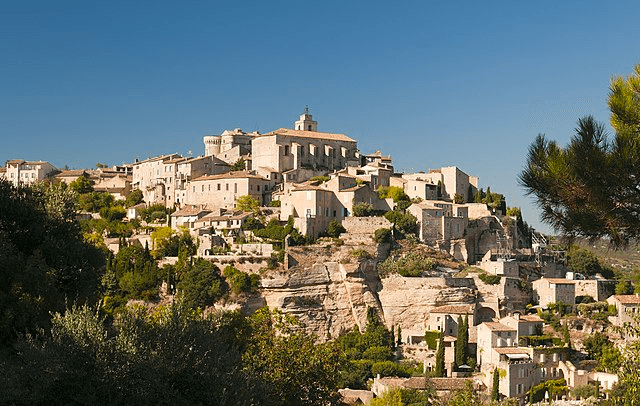
Spend some time walking through the winding cobbled streets of the old town, and explore the many art galleries that line the street. A must-visit is the Gordes Castle, a historical monument in the heart of the village that dates back to the 11th century. Today, it is a cultural center dedicated to hosting exhibits by local artists. Another must-see is the Saint-Firmin Church located just down the street from the Gordes Castle, where you will be awed by its remarkable wood panelling and colourful murals.
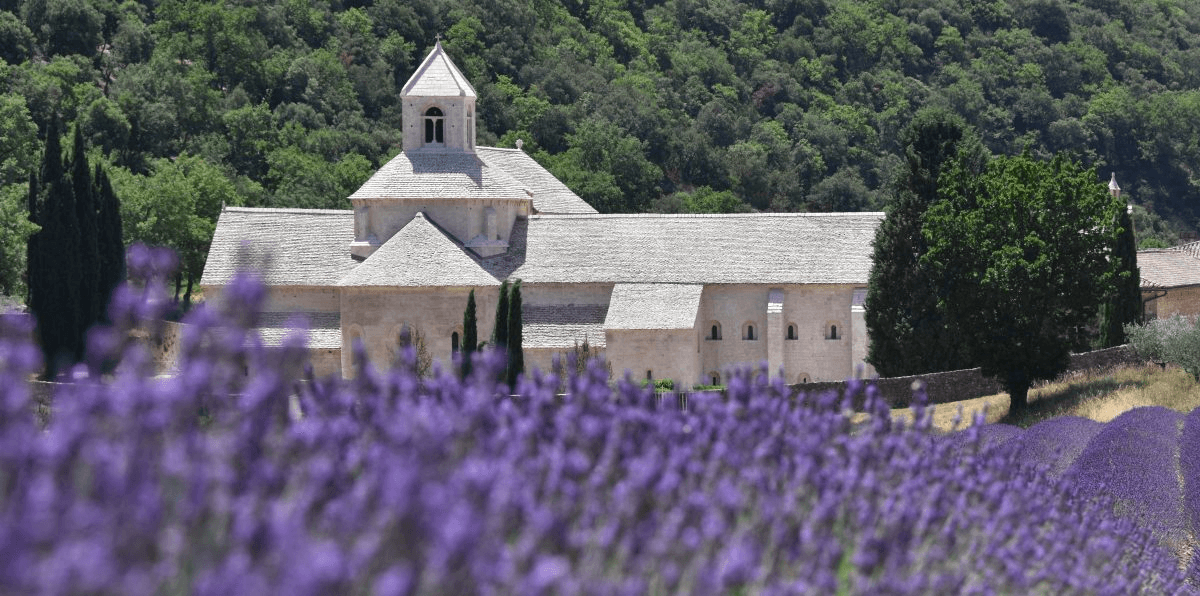
For some of the best views in Gordes, be sure to visit the Gordes ViewPoint where you can get a view that overlooks the houses and the Luberon Regional Park below. It is also a great spot for viewing of the sunsets, though it could sometimes get rather crowded. In the summer seasons, be sure to also visit the Senanque Abbey for a magical view of the blooming lavender fields.
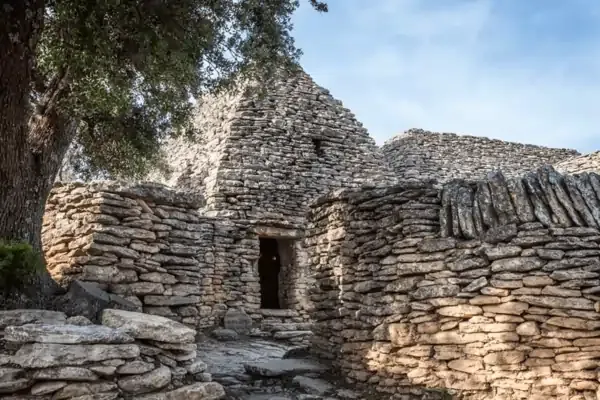
If you are visiting Gordes, you should also take the chance to visit the nearby Village des Bories, where you will see a collection of huts that were constructed by stacking dry stones.
💡 Gordes has a weekly market on Tuesday mornings (until 1pm) and a Producers’ market on Thursday evenings from June to September. If you would like to experience the Gordes market, you might want to plan to visit the village on a Tuesday.
🚗 Getting to Gordes: It is easiest to get to Gordes by driving, though parking could be a problem. Alternatively, take the train to Gare de Cavaillon where there are public buses (approx. 30 minutes ride) to Gordes.
🚶♀️Travelling within Gordes: The Gordes Castle, Saint-Firmin Church, and the Gordes ViewPoint are walking distances with each other. If you are planning to visit the Village des Bories and Senanque Abbey, it is still possible to do so even if you don’t have a car — though you might want to note that the walk could take up to 45 minutes one-way.
⏰ How much time to spend at Gordes: You can easily cover the main attractions in Gordes in a day-trip. But if you are travelling without a car, you may want to consider spending a night considering the travel times required.
Roussillon
Roussillon is a beautiful hilltop village located in the Luberon region of Provence in southeastern France. The village is known for its stunning red and ochre cliffs and its picturesque winding streets lined with colorful houses and artisan shops.

Roussillon is famous for its ochre quarries, which have been a major source of the mineral pigment used in art and industry for centuries. One of the must-see attractions in Roussillon is the Sentier des Ocres, or Ochre Trail, which takes visitors on a scenic walk through the village's ocher quarries and cliffs. The trail is well-marked and offers incredible views of the red and orange cliffs, as well as the surrounding vineyards and olive groves. There are two trails to choose from - a 30-minute or 60-minute trail, both fairly easy and suitable for all ages.
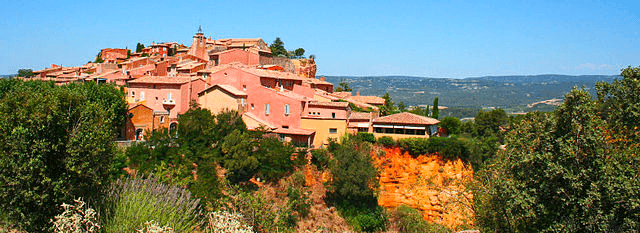
You can also learn more about the industrial history of ochre at the Ecomusee de l'ocre. Spend some time taking a leisurely stroll through the area around the town centre (Place de la Mairie) and observe the combination of different shades and colours of the ochre sand on the washes and walls of old homes and buildings. Or head up to the top of the village for a sweeping view of the Luberon region.
In addition to its natural beauty, Roussillon is home to a number of charming artisan shops, boutiques, and galleries, where visitors can browse and purchase locally made crafts and souvenirs. Some of the attractions at Roussillon include the Art Gallery Contemporary Tapiezoand Saint Michel Church.
💡 The village of Roussillon is located just a 15 minute drive (or 20 minute bus ride) away from Gordes. If you are planning to stay the night at Gordes, you can consider also heading to Roussillon on the second day.
🚗 Getting to Roussillon: It is easiest to get to Roussillon by driving. If you don’t drive, you can take the train to Gare de Cavaillon where there are public buses (approx. 1 hour ride) to Roussillon.
🚶♀️Travelling within Roussillon: The main attractions at Roussillon are all within walking distances to each other.
⏰ How much time to spend at Roussillon: You can easily cover the main attractions in Roussillon in a half-day trip. Perhaps consider combining the visit to Roussillon with a visit to the nearby village of Gordes.
L'Isle-sur-la-Sorgue
The journey through Provence's most charming villages would not be complete without a visit to L'Isle-sur-la-Sorgue, a picturesque village known as the "Venice of Provence" because of its numerous canals and bridges.
One of the main attractions in L'Isle-sur-la-Sorgue is the Sunday outdoor market that sells products ranging from fruits, cheese, and antiques. There are also various pop-up antique markets sprawled across the village. Visitors can browse a wide range of antiques and vintage items, including furniture, art, textiles, and jewelry, and soak up the unique atmosphere of this lively market.
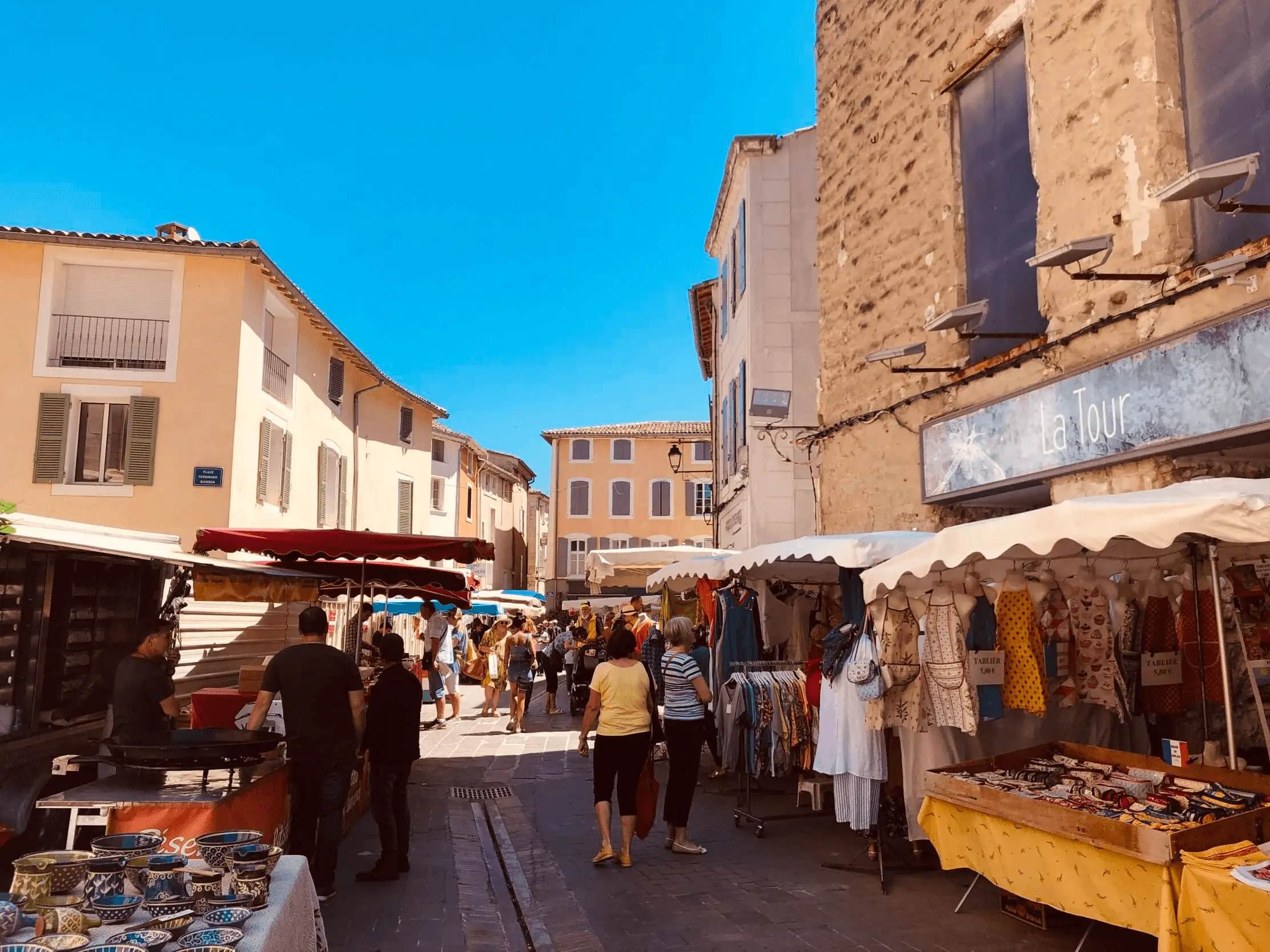
In addition to its antique markets, L'Isle-sur-la-Sorgue is also home to numerous art galleries and various museums, ranging from textile museums, antique toy museums, to museums dedicated to contemporary art. One of the best things to do in L’Isle-sur-la-Sorgue is to explore the town centre while taking a leisurely stroll along the canals and bridges.
Another highlight of L'Isle-sur-la-Sorgue is its delicious Provencal cuisine, with many excellent restaurants and cafes serving up traditional dishes such as ratatouille, bouillabaisse, and tapenade. Visitors can also sample the region's famous wines and enjoy a leisurely lunch or dinner in one of the village's many outdoor terraces and cafes. One of the most famous eateries is the Café de France.
🚗 Getting to Saint-L'Isle-sur-Sorgue: As with most villages, it is recommended to drive. However, you can also take a bus or train from Avignon or Arles to L'Isle-sur-Sorgue.
🚶♀️Travelling within L'Isle-sur-Sorgue: The main attractions at L'Isle-sur-Sorgue are all within walking distances to each other.
⏰ How much time to spend at L'Isle-sur-Sorgue: L'Isle-sur-Sorgue is a tiny village and you should be able to cover most of the village in half a day.
Lourmarin
Lourmarin is a charming village located in the Luberon region of Provence, and is known for its natural beauty, lush vineyards, lively cultural scene, and picturesque streets.

Unlike the typical hilltop villages, the village of Lourmarin has cafes and restaurants spilling out into the streets backdropped against the natural beauty of the region. The Lourmarin Market on Fridays are also not to be missed. Lourmarin is known for a lively cultural scene, with a variety of art galleries, bookshops, and theaters. The village hosts several cultural events throughout the year, including the Summer Music Festival which runs a series of classical music recitals. If you are looking for a village with a vibrant and lively atmosphere, Lourmarin would be it.

In addition to its lively and relaxed atmosphere, Lourmarin also has a number of attractions to look out for. The centerpiece of Lourmarin is the 15th-century Lourmarin Castle, which sits at the top of the village and offers stunning views of the surrounding countryside. Visitors can explore the castle's well-preserved interior, including its impressive staircase, chapel, and ornate furnishings. Lourmarin is also home to several other landmarks, including the grave of Albert Camusand the 18th-century Church of St. Andrew.
🚗 Getting to Lourmarin: It is easiest to get to Lourmarin by driving. By public transport, you can take a bus from Pertuis, but note that you will have to change buses (there is no direct bus)
🚶♀️Travelling within Lourmarin: The main attractions at Lourmarin are all within walking distances to each other.
⏰ How much time to spend at Lourmarin: Lourmarin does not have many attractions. But we recommend you spend at least half a day to explore and just take in the atmosphere at the village centre.
Les Baux-de-Provence
Les Baux-de-Provence is a medieval village located in the Alpilles mountains of southern France. The village is known for its impressive hilltop fortress, stunning views of the surrounding countryside, and its charming narrow streets and alleyways.
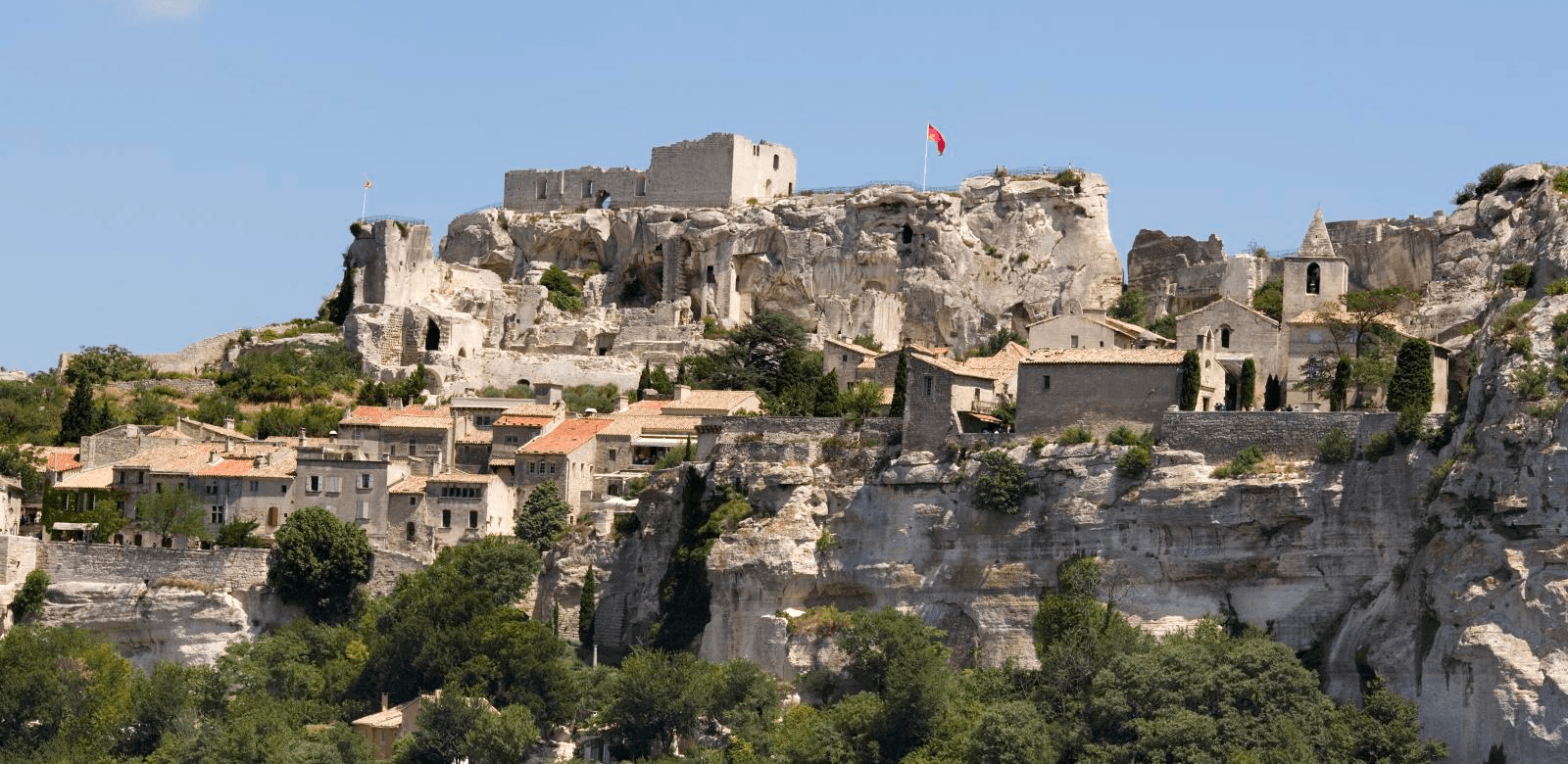
The fortress of Les Baux-de-Provence dates back to the 10th century and is rich with cultural heritage. Visitors to the fortress can explore the ancient walls, towers, and chapels, as well as the museum of medieval weapons and armor. From the top of the fortress, visitors can enjoy panoramic views of the surrounding countryside, including the vineyards and olive groves of the Luberon region. For nature-lovers, there are also various hiking trails around Les Baux-de-Provence for you to explore.
Les Baux-de-Provence is home to various historic landmarks, including the 12th-century Romanesque church of St. Vincent and the ruins of the Château des Baux. Visitors can also explore the village's charming streets and alleys, which are lined with artisan shops, galleries, and cafes.
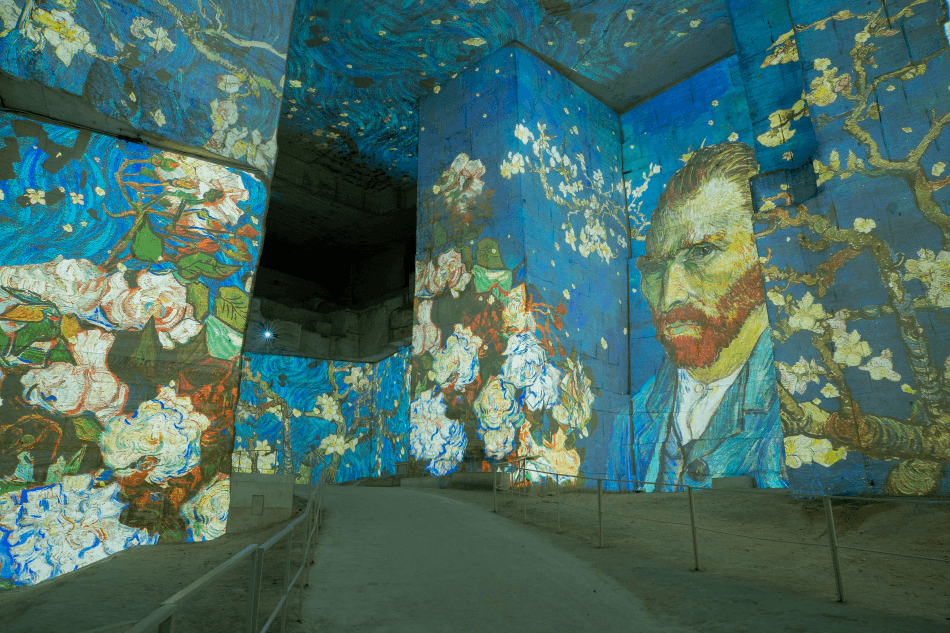
One of the most unique and must-see attractions in Les Baux-de-Provence is the Carrieres de Lumieres, or the Quarries of Light. This immersive multimedia art show takes place in an underground quarry and features stunning visual projections set to music. Each year, the show features a different theme, and past shows have included the works of artists such as Van Gogh, Chagall, and Monet.
🚗 Getting to Les Baux-de-Provence: It is easiest to get to Les Baux-De-Provence by driving. If you don’t drive, you can take the take the bus (line 57) from Avignon or Saint-Remy — note that the bus only serves Les Baux-de-Provence during summer.
🚶♀️Travelling within Les Baux-de-Provence: The main attractions at Roussillon are all within walking distances to each other.
⏰ How much time to spend at Les Baux-de-Provence: You can easily cover the main attractions in Les Baux-de-Provence in half a day. Cater more time if you plan to hike on one of the trails around the region.
Saint-Remy-de-Provence
Saint-Remy-de-Provence is a charming and picturesque village, best known for its association with the famous Vincent van Gogh. It is also the site of some of the most well-preserved Roman structures in Provence.
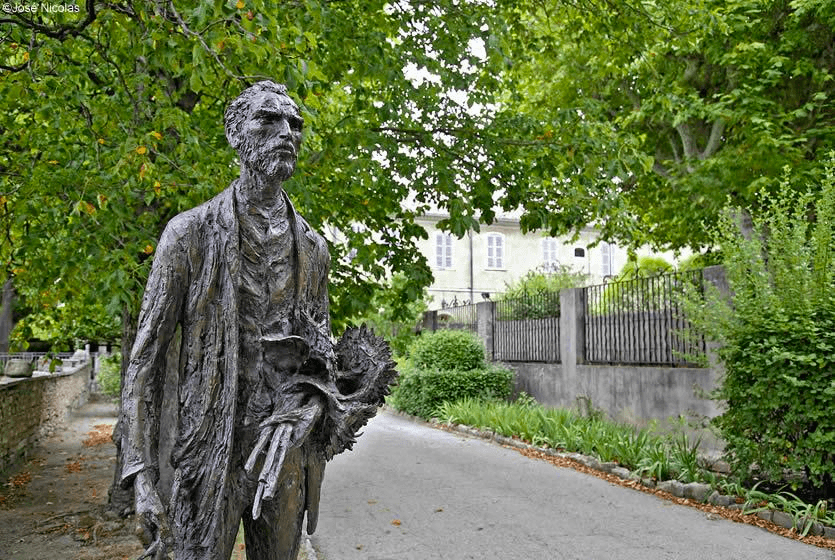
One of the most notable attractions in Saint-Remy-de-Provence is the Saint-Paul-de-Mausole monastery, where Vincent van Gogh lived and worked during his stay in the village in 1889. Visitors can explore the monastery and see the room where Van Gogh stayed, as well as a replica of his studio and several of his paintings. If you are a fan of contemporary art, you can also visit Musee Estrine, which also houses an education centre dedicated to Vincent van Gogh.

Just outside the entrance of Saint-Remy-de-Provence, you will be able to see two of the most well-preserved artefacts of the Roman city of Glanum — the oldest Triumphal Arch in France and the Jules Mausoleum, collectively known as Les Antiques. Travel a little further out and you will see the Site Archéologique de Glanum, an extensive site where you can see the remains of the ancient Roman town.

Another popular attraction in Saint-Remy-de-Provence is the weekly market, which takes place every Wednesday in the center of the village. The market is a vibrant and colorful affair, with vendors selling fresh produce, handmade crafts, and local specialties such as olives, cheese, and wine.
In addition to its cultural and historic attractions, Saint-Remy-de-Provence is also surrounded by stunning natural beauty. The Alpilles mountains provide a dramatic backdrop to the village, and visitors can explore the surrounding countryside on foot or by bike, taking in the vineyards, olive groves, and fields of lavender that are characteristic of the region.
💡 Saint-Remy is commonly regarded as a good base if you are looking to explore the villages in the Alpilles region of Provence.
🚗 Getting to Saint-Remy-de-Provence: Driving would be the most convenient way to get to Saint-Remy. But you can also take a bus from Avignon or Arles to Saint-Remy-de-Provence.
🚶♀️Travelling within Saint-Remy-de-Provence: The main attractions at Saint-Remy are all within walking distances to each other.
⏰ How much time to spend at Saint-Remy-de-Provence: It is recommended to spend at least a day in Saint-Remy-de-Provence.
Valensole
Valensole is a village best known for its stunning lavender fields and olive groves. It is one of the best destinations to see lavenders during summer.

The main attractions in Valensole is its beautiful lavender fields, which bloom in the summer months and create a stunning sea of purple that stretches as far as the eye can see. In fact, Valensole is known to have the best lavender fields in the region. The best time to visit the lavender fields will be during the end of June to first week of July. Visitors can take a leisurely stroll through the fields, or take a guided tour to learn more about the cultivation and harvesting of this fragrant plant.
Valensole’s town area does not have many attractions, but rather, is more representative of a local town. This also means that during the off-season of lavenders, the town is rather quiet. But if you are looking to observe and experience the local way of life, you can still consider heading to Valensole outside of the lavender season!
🚗 Getting to Valensole: Valensole is very remote and not easily accessible without a car.
⏰ How much time to spend at Valensole: Bulk of your time will be spent at the lavender fields, so it depends how much time you will need to enjoy the fields.